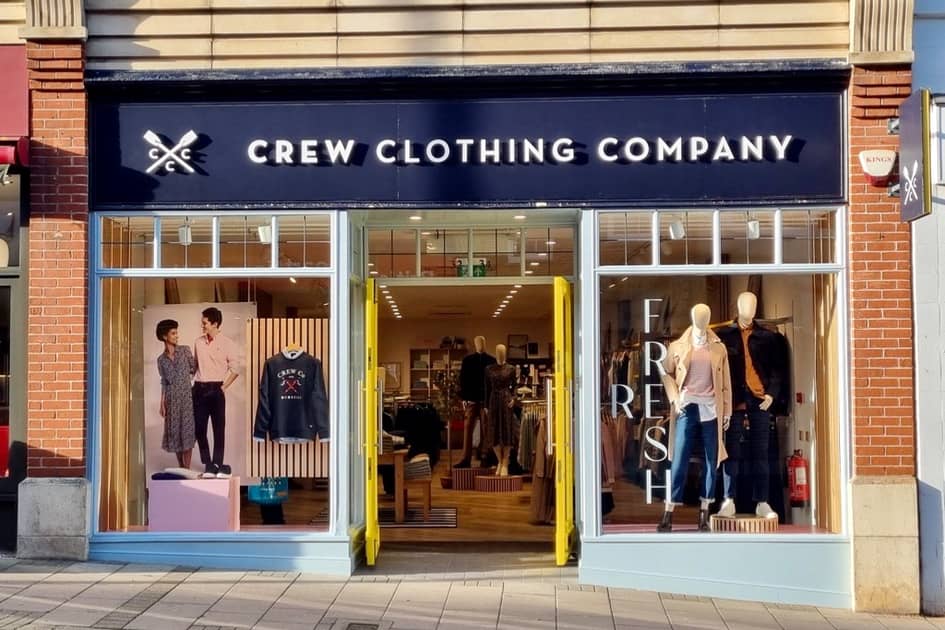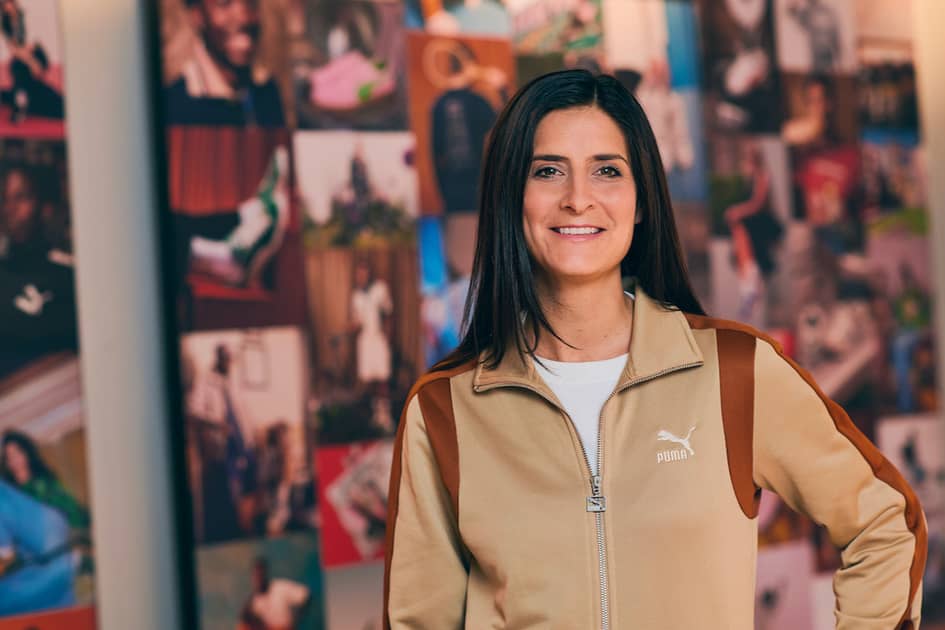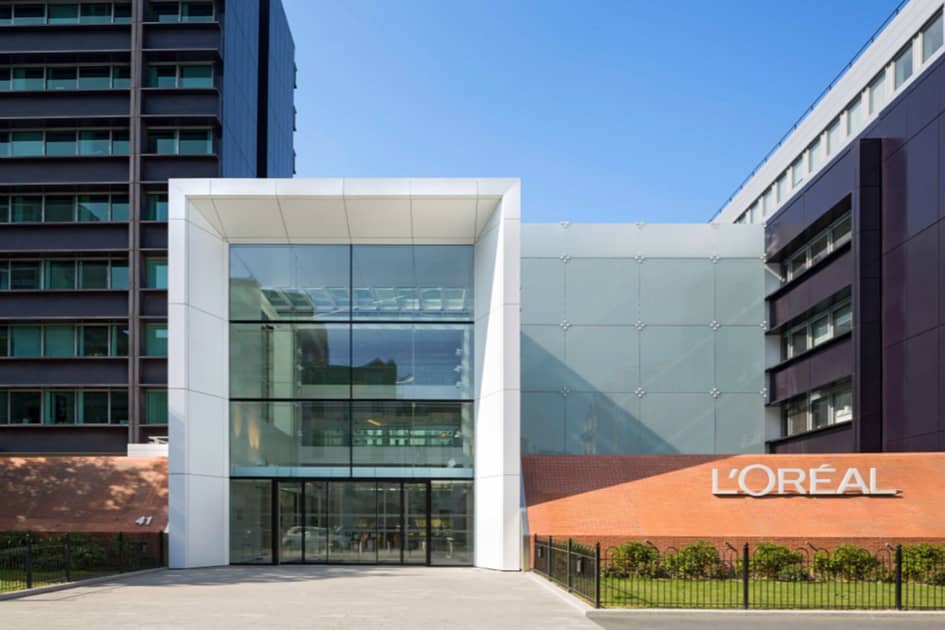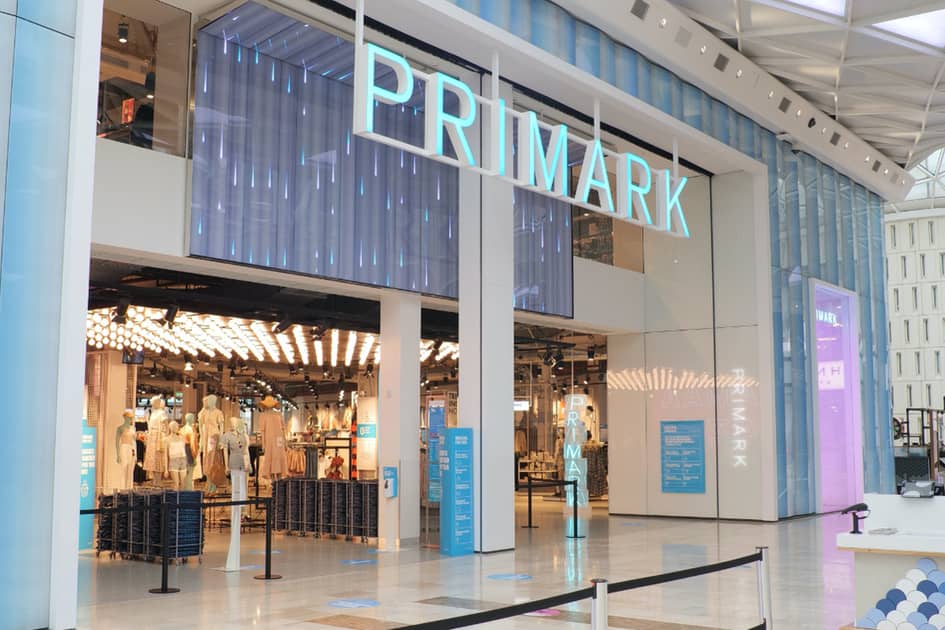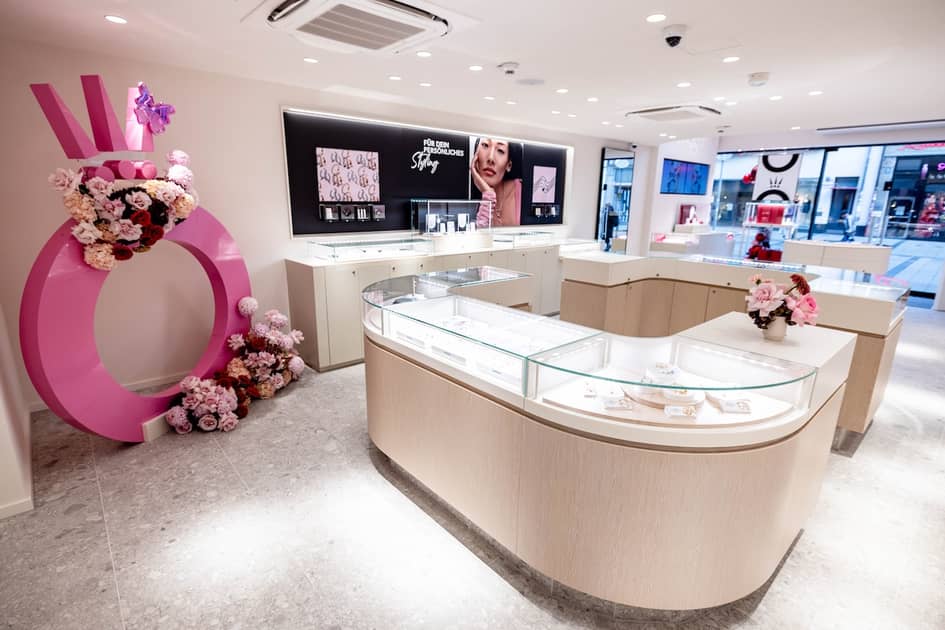Women shirts & amp; Pajamas and versatile Fashion of Amazon and Alibaba., fashion, Facebook,youtube, instagram, tweeter and google
Friday, February 9, 2024
UK lifestyle brand Crew Clothing open East Grinstead store
British lifestyle brand Crew Clothing has opened a new store in East Grinstead, bringing a bit of coastal style to West Sussex. The 1600sqft space opened its doors on February 1st, launching with its Spring Summer 2024 collection.
Crew Clothing Company was found in the back of a Salcombe windsurfing shop in 1993 and currently operates 100 stores around the UK. The latest opening created five new local jobs, the company said in a statement. In addition to its expansive portfolio of high street stores, the brand continues to be influenced by the coast and maintains its affiliation to British sport, having fostered partnerships with the LTA, Williams Racing, Henley Royal Regatta, the PCA and Exeter Chiefs.
Crew Clothing’s Head of Marketing, Naomi Parry commented “Opening the East Grinstead store ahead of our SS24 collection marks an exciting time for the Crew Clothing brand, highlighting our distinctive style and connection to the south of England. We are so pleased to become a part of the retail community in East Grinstead.’
West Sussex has grown into a bonafide shopping destination offering a diverse retail landscape, with mix of urban and rural areas, where towns like Chichester, Horsham, and Crawley are considered key commercial hubs. The region has a relatively affluent population, which can be advantageous for fashion retailers targeting consumers with higher disposable incomes.
http://dlvr.it/T2XYZJ
Berlin Fashion Week FW24: avant-garde and diversity
Lou de Bètoly FW24, Berlin Fashion Week. Credits: Alicia Reyes Sarmiento//FashionUnited
From February 5 to February 8, Berlin Fashion Week brought the European fashion scene to the German capital. Over four days, both up-and-coming and established brands presented their creations at a total of 32 events, from intimate presentations to exuberant catwalk shows that characterised the Berlin scene.
Avant-garde was key, reflected in unique proposals such as sweaters made with dog hair and a diverse casting aimed at reflecting Berlin's diversity as a city, while also showing the German consumer that this clothing—dominated by black—was also made for them.
FashionUnited gives an overview of the most notable presentations at Berlin Fashion Week FW24/25.
Craftsmanship and extravagance, with Kanye West in the front row
William Fan FW24, Berlin Fashion Week. Credits: Alicia Reyes Sarmiento // FashionUnited
The first day was characterised by William Fan's show, who chose the imposing Berlin Olympic Stadium as the backdrop to present his collection ‘Off Duty,’ in which he tried to go “beyond any attire” by presenting simple yet structured designs, suitable for everyone. This idea was underscored by the designer's choice of many models who looked like they came "directly from the streets of Berlin."
Marke FW24, Berlin Fashion Week Credits: James Cochrane, courtesy of Berlin Fashion Week
Marke then wowed the crowd with a collection made using circular textiles, partially manufactured in Germany just an hour from its atelier. This allowed the designer himself to personally supervise the process. The cost of this attention to detail is reflected, for instance, in outerwear pieces that go up to 990 euros.
The FW24 collection is the brand's second collection and its first foray into the wholesale market, so the designer has undertaken a profound exercise of introspection to define the label’s identity. This is reflected in the new collection through the incorporation of distinctive elements from folk fashion, French baroque, and Renaissance paintings or Bavarian shepherds. The ultimate goal is to reinterpret these elements, valorizing craftsmanship and applying it to streetwear, with an eye on the future.
Anonymous Club FW24. Credits: Ioannis Papadaki, courtesy of Berlin Fashion Week
The brand Anonymous Club closed the first day with much talk, not only because of the extravagance of its proposal but also because the controversial Kanye West was seated in the front row, which, despite the rapper’s efforts, did not go unnoticed.
Ukrainian brands, French elegance, and queer provocation
Dzhus FW24 at Berlin Fashion Week. Credits: ©Launchmetrics/spotlight
Ukrainian brands maintained a strong presence at the event. Designer Dzhus took advantage of the runway to tell her personal story, presenting a collection shaped by her traumas. Her runway show portrayed her personal experiences and how these evolved. Garments transformed under her hands, symbolised the exploration and overcoming of difficult emotions. The models showed impeccable performance, and in terms of beauty, her proposal was one of the most elaborate. It was clear that a lot of effort had gone into the performance and beauty looks of the models.
Handerlump FW24 Credits: Moritz, courtesy of Berlin Fashion Week
The collection of the young Berlin-based brand Handerlump left the fashion crowd wanting more, with the fun touch of its collaboration with the courier company DHL. As the models moved across the runway, they shook off water with each step they took, presenting garments with interesting silhouettes and made with high-quality dead-stock materials.
Lou de Bètoly FW24 at Berlin Fashion Week Credits: Alicia Reyes Sarmiento // FashionUnited
French designer Odely Teboul presented the collection for her brand Lou de Bètoly in the empty rooms of the former Habitat furniture store at Berlin’s Potsdamer Platz. Inspired by classic elegance and the intrinsic seduction of lingerie, the collection predominantly combined vintage materials such as leather and mohair with recovered nylon fabrics and wool spun from recycled dog hair waste, which could dress none other than Beyoncé herself. Beyoncé has previously been spotted wearing garments from the French designer’s other collections.
The Lou de Bètoly label is distinguished by its artisanal approach, transforming second-hand materials into exceptional luxury pieces, some of which can reach 2000 euros, such as the exclusive dog hair sweater from her newest collection.
Lou de Bètoly FW24 at Berlin Fashion Week Credits: Alicia Reyes Sarmiento // FashionUnited
The designer acknowledges the lack of body diversity in her casting and commits to addressing it in future collections. She only works custom-made because the nature of the techniques she uses embraces the uniqueness of each body, adapting her design to the measurements of each individual. This would imply casting almost a year in advance, when the collection begins to be created, which is not easy considering the industry's accelerated pace.
Lou de Bètoly FW24 at Berlin Fashion Week Credits: Alicia Reyes Sarmiento // FashionUnited
And the question is, why not present in Paris, her hometown and the cradle of fashion? In addition to being settled in Berlin for many years, where she landed thanks to another fashion project, she has found great support in the German Fashion Council which boosts her work.
Namilia FW24 Berlin Fashion Week Credits: ©Launchmetrics/spotlight
Namilia FW24 Berlin Fashion Week Credits: Alicia Reyes Sarmiento // FashionUnited
’Pfoten Weg’ is the name of Namilia's collection, which was revealed to the brand's eager army of fans on Tuesday night. Drawing inspiration from mediaeval armour, military looks, and glamorous trash, Emilia Pfohl and Nan Li showcased looks that provocatively addressed the hate against queer people who are unapologetically themselves.
Back to school, one size fits all, and recycled fashion
SF1OG FW24 Credits: James Cochrane, courtesy of Berlin Fashion Week
SF1OG FW24 Credits: James Cochrane, courtesy of Berlin Fashion Week
SF1OG stood out as the clear favourite on the third day. The brand presented a nostalgic collection that transported attendees to another era, recreating a school gym filled with references. Sitting on school chairs, they watched as the models paraded through an improvised classroom, wearing backpacks, and carrying iPods, and even a Bravo magazine.
Lueder FW24 Credits: James Cochrane, courtesy of Berlin Fashion Week
The Lueder FW24 collection was the second most interesting on Wednesday. The brand wanted to explore the idea that we are all everyday heroes. Influenced by her past as a tailor in the world of tailoring, the designer managed to translate her acquired knowledge into streetwear, creating one-size-fits-all elastic garments that embrace the body they dress, regardless of size.
Germany is not the primary market for this designer, a consumer who wants to see more continuity over the years, while her brand is still going through an introspective process that resonates better with buyers in Korea and Japan. According to the designer, the buyers in these countries are more likely to make a purchase when they like something and moreover "nobody else" wears it.
Marie Lueder, designer at the showroom of Hotel Château Royal Credits: Alicia Reyes Sarmiento // FashionUnited
In her casting, she wanted to focus on showcasing the diversity of Berlin as a city, to show the German customer that this clothing is also for them.
It is a collection of garments of up to one and a half kilos of mohair that would cost 1,100 euros, with around 30 reproductions per piece, based on the volume of pre-orders, some of which consists of 50 pieces.
The shoes from her collection were some of the most talked-about pieces of the week, fitting "like a glove."
Shoes from Lueder's FW24 collection at the showroom of Hotel Château Royal Credits: Alicia Reyes Sarmiento // FashionUnited
Ukrainian designer PLNGNS also earned a spot in this selection by presenting a proposal of looks designed exclusively using recycled and upcycled materials featuring hundreds of sneakers.
Plngns FW24 at Berlin Fashion Week Credits: ©Launchmetrics/spotlight
Second-hand fashion has always been part of the culture of his country, not so much for sustainability reasons, but due to the difficult economic reality Ukraine was facing even before the current conflict. This has always pushed him to explore these stores and see them as an ideal resource to satisfy his creative thirst.
Four days filled with fashion
Avenir FW24 at Berlin Fashion Week Credits: ©Launchmetrics/spotlight
Avenir FW24 Berlin Fashion Week Credits: ©Launchmetrics/spotlight
The brand Avenir gracefully presented its collection on the last day. It cleverly played with the interaction of heat and cold, with garments designed for temperature changes evident in knit looks, patchwork jackets, and denim designs. There are also decorations that mimic burns.
This article was originally published on FashionUnited.ES. Translation and edit from Spanish into English by Veerle Versteeg.
http://dlvr.it/T2XYG0
Puma names Julie Legrand as senior director global brand strategy
Puma has appointed Julie Legrand, 43, as senior director global brand strategy.
Reporting to Puma’s vice president brand & marketing Richard Teyssier, Legrand will oversee an important part of the company’s strategic priority to elevate the brand.
“With Julie, we have found an experienced leader to head up Puma’s global brand strategy. She will define and execute our strategy to drive higher brand visibility and strengthen the Puma brand and its perception around the world,” said Richard Teyssier.
Legrand, the company said in a release, has 20 years of experience in marketing and brand management. Most recently, she worked as H&M’s global brand director. She also held senior positions in marketing and brand at Procter & Gamble.
“I am very proud to be in charge of further sharpening the brand’s positioning and preference with consumers,” added Legrand.
The company added that Legrand’s appointment follows the company’s decision taken in June to reorganise its global brand management and marketing operations and relocate them from Boston to Puma’s headquarters in Herzogenaurach, Germany.
http://dlvr.it/T2XBrH
L'Oréal achieves 2023 like-for-like sales growth of 11 percent
L'Oréal sales of 41.18 billion euros in the financial year 2023, increased by 7.6 percent reported and 11 percent like-for-like.
The company’s operating margin improved to 19.8 percent, up 30bps; while operating profit reached 8,143.3 million euros. Earnings per share of 12.08 euros, rose by 7.3 percent.
L'Oréal’s board of directors has announced a dividend of 6.60 euros, an increase of 10 percent.
Commenting on the annual figures, Nicolas Hieronimus, CEO of L'Oréal, said in a statement: “2023 was a very successful year for the group. In a challenging environment of geopolitical tensions, inflationary pressures, and a stagnating beauty market in China, we delivered our best like-for-like growth in more than 20 years (excluding 2021).”
Highlights of L'Oréal’s full year results
The company’s professional products division reported growth of 7.6 percent like-for-like and 4 percent reported.
The consumer products division increased 12.6 percent like-for-like and 8.2 percent reported.
L'Oréal Luxe grew 4.5 percent like-for-like, 2 percent reported and the dermatological beauty division increased sales by 28.4 percent like-for-like and 25.5 percent reported.
Across geographies, sales in Europe were up 16 percent like-for-like and 13.7 percent reported, sales in North America advanced 11.8 percent like-for-like and 9.7 percent reported, while sales in North Asia contracted 0.9 percent like-for-like and 5.8 percent reported.
L'Oréal’s sales in the SAPMENA-SSA region witnessed growth of 23.2 percent like-for-like and 16.4 percent reported, and sales in Latin America achieved sales rise of 24.4 percent like-for-like and 22.8 percent reported.
L'Oréal announces new board nominations
At a meeting on February 8, 2024, the company’s board of directors chose to propose Jacques Ripoll as a new independent director at the annual general meeting. Ripoll is a partner at Eren Groupe, which harnesses technological innovation to save natural resources.
The company added that beyond the financial acumen he has honed over the course of a career with leading banks including Société Générale, Banco Santander and Crédit Agricole, Ripoll will bring strategic vision on innovation, expertise in new climate-related technologies, and a commitment to sustainable development. He is set to join the audit committee after the annual general meeting on April 23, 2024.
The board also plans to recommend renewing the tenures of Béatrice Guillaume-Grabisch, Ilham Kadri, Jean-Victor Meyers and Nicolas Meyers and also acknowledged Belén Garijo's decision to step down as director due to professional commitments, effective after the AGM, two years before the end of her current term.
If the AGM approves the proposed resolutions, the company’s board will continue to comprise 16 directors.
In February, L'Oréal announced the appointment of Ezgi Barcenas as chief corporate responsibility officer to continue the group’s environmental and societal transformation. She succeeds Alexandra Palt who will be leaving her responsibilities on April 1, 2024, having established, and anchored the foundations of this transformation during her 12 years with the group. Palt, the company said, remains CEO and administrator of the L’Oreal Foundation.
http://dlvr.it/T2XBPt
Soft luxury demand impacts Capri Holdings Q3
Capri Holdings’ third quarter revenue of 1.43 billion dollars decreased 5.6 percent compared to last year. On a constant currency basis, total revenue decreased 6.6 percent.
The company said in a statement that retail sales declined in the mid-single-digits with trends being impacted by softening luxury consumer demand primarily in the Americas as well as by the Michael Kors Americas ecommerce implementation issues. In wholesale, revenue decreased in the low-teens driven by softer demand in the Americas and EMEA.
Commenting on the third quarter results, John D. Idol, the company's chairman and CEO, said: "Overall, our performance in the third quarter continued to be impacted by softening demand for fashion luxury goods. However, sales trends improved sequentially in the third quarter, driven by better results in our own retail channel while sales in our wholesale channel remained challenged.”
Highlights of Capri Holdings’ Q3 operating results
Gross profit and adjusted gross profit for the third quarter declined to 928 million dollars and gross margin was 65 percent.
Net income decreased to 105 million dollars or 88 cents per diluted share, while adjusted net income dropped to 142 million dollars or 1.20 dollars per diluted share.
Review of Capri Holdings results across core brands
Versace revenue of 227 million decreased 8.8 percent on a reported basis and 10.8 percent on a constant currency basis driven by softening consumer demand in the Americas and EMEA partially offset by increased revenue in Asia. Retail sales declined in the low-single-digits while wholesale revenue decreased double-digits.
Revenue in the Americas declined 14 percent, while revenue in EMEA decreased 13 percent and revenue in Asia increased 10 percent.
Jimmy Choo revenue of 166 million dollars decreased 1.2 percent on a reported basis and 3 percent. Retail sales were approximately flat while wholesale revenue decreased mid-single-digits. Revenue in the Americas declined 11 percent, while revenue in EMEA was flat and revenue in Asia increased 9 percent.
Michael Kors revenue of 1.03 billion dollars decreased 5.6 percent on a reported basis and 6.2 percent on a constant currency basis. Retail sales declined in the mid-single-digits while wholesale revenue decreased low-double-digits. Revenue in the Americas declined 7 percent, while revenue in EMEA decreased 2 percent and revenue in Asia declined 2 percent.
http://dlvr.it/T2WLxl
Thursday, February 8, 2024
SCAD Museum of Fashion opens exhibition about Cristóbal Balenciaga
The Fash Museum of Fashion and Film at the Savannah College of Art and Design (SCAD) recently opened an exhibition featuring the work of Spanish couturier Cristóbal Balenciaga Eizaguirre, the founder of luxury fashion house Balenciaga.
The exhibition, entitled ‘Cristóbal Balenciaga: Master of Tailoring’ features more than 30 of the designer’s garments, illustrations and photographs that have been rarely seen by the public, especially in the US.
It features pieces from the Balenciaga Archives from the late 1940s to 1968 and has been curated exclusively for SCAD Fash and is organised by Rafael Gomes, creative director of SCAD FASH museums.
Some of the pieces on display at the museum were pulled from the archive of the late designer Azzedine Alaïa which featured over 500 preserved Balenciaga looks. The exhibition also includes illustrations and photographs from the Balenciaga archives selected by Gaspard Demasse, head of Balenciaga Heritage, and one-of-a-kind sketches and original atelier communications from Parodi Costume Collection.
The garments showcased range from daywear to evening gown silhouettes worn by celebrities of the era such as Elizabeth Taylor and Delores del Rio, illustrating Balenciaga’s experimentation with form and highlighting “his mastery of tailoring and inventive approach to fashion design,” the release sent out by SCAD reads.
In the exhibition, the US institution portrays a breadth of haute couture designs, from the perspectives of both the couturier and the client. It examines the designer’s experimentation with
Gaël Mamine, head of collections of Fondation Azzedine Alaïa, in collaboration with Gaspard de Massé, head of archives at Balenciaga, and Gonzalo Parodi, director of Parodi Costume Collection have curated the exhibition.
Cristóbal Balenciaga: Master of Tailoring runs until June 2, 2024 at the SCAD Fash Fashion and Film Museum in Atlanta, Georgia.
http://dlvr.it/T2V73k
Sea Beyond: Prada Group and Unesco introduce educational programme in 56 countries
Recently, Unesco and the Prada Group announced the third edition of their ‘Sea Beyond’ educational programme for secondary school students. The two partners have expanded the programme this year so it reaches 34,000 students in 56 different countries.
The aim of the Sea Beyond programme is the dissemination of knowledge on the oceans and their preservation. This year’s training focuses on “the interrelation between the ocean and climate, and the associated environmental challenges”, the press release reads.
The 2024 programme will offer students and teachers literacy training sessions, including in-person lessons with ocean and climate experts at Unesco. In addition, Unesco and Prada Group are launching a contest for which they have invited schools to create an awareness campaign with text, graphics and interactive content.
The goal of the contest is for participants to explain to their peers how to adopt more conscious behaviours that will help preserve the ocean.
The jury who will evaluate the students’ campaigns consists of “people who have placed a love for the ocean at the centre of their personal and professional lives”, also known as Sea Beyonders, as per the release.
Libraries without Borders: Prada Group and Unesco partner with new organisation
A new addition this year is the partnership with Bibliothèques Sans Frontières (Libraries without Borders), an international non-profit organisation that aims to facilitate access to education, culture and information for people in vulnerable situations.
The aim of the new partnership is to provide children and young citizens in vulnerable communities with access to education about the oceans.
This access will be facilitated through the multimedia centre the ‘Ideas Box’ which spans over 100 square metres and features internet connection, tablets, and laptops. It also boasts over 250 books and games as well as hundreds of training materials.
From June 2024, the partnership with Libraries without Borders will allow the development of an Ideas Box dedicated to the Sea Beyond programme. The Sea Beyond Ideas Box will be presented in Venice on International Ocean Day and based in Naples. Afterwards, it will travel across Italy.
In France, Burundi and the Ivory Coast, multimedia contents relating to the oceans prepared by Unesco experts, will be integrated into Ideas Boxes that already exist in these countries.
One percent of the proceeds of the sales of Prada’s Re-Nylon Collection go directly towards the Sea Beyond programme.
http://dlvr.it/T2V6pK
Primark to invest 75 million pounds into UK store network
Budget retailer Primark is preparing to make a large-scale investment into its UK retail network, with a slew of new store openings and further expansions expected to take place this year.
A new 75 million pound investment is to go into its British store estate over the course of 2024, the company revealed on Thursday, building on past funding and bringing its total investment in the region to 100 million pounds for the year.
Among the new store openings will be a location in Bury St. Edmunds, which is due to open March 6, as well as Teesside Park and Glasgow Fort, both scheduled for later in the year.
New locations will also be open from 2025 in Epsom, Surrey, and Newbury, Berkshire, bringing its network to 195 stores.
Primark to bring UK retail network to 195 stores
A series of store expansions are also on the agenda, with its Westfield Stratford location to almost double in size to over 81,000 square feet and its Metrocentre store in Gateshead set to grow to almost 80,000 square feet following its reopening later in the year.
A further 15 existing stores will also be refurbished this year as part of the company’s ongoing refit programme, through which upgraded interiors and fixtures will be introduced.
In a release, Kari Rodgers, UK retail director for Primark, said: “We’ve changed a lot in the fifty years since we opened the doors on our first store in Great Britain in Derby back in 1974, but at our heart, we are still the same.
“We’re as committed as ever to offering the very best value on the high street and making great fashion more affordable and accessible for everyone. This latest investment will mean bigger and better stores, hundreds of new jobs across the country and shows our ongoing commitment to the UK high street.”
http://dlvr.it/T2TljW
Pandora plans wide scale retail expansion following ‘strong’ Q4
Jewellery specialist Pandora has unveiled a major retail expansion for the coming year after it reported a strong “growth” period throughout Q4 of 2023.
Over 2024, the retailer is planning to open between 75 and 125 concept stores, as well as 25 to 50 owned and operated other points of sale.
As such, it forecasted its capital expenditure (CAPEX) to end at 6 to 7 percent share of revenue, as it continues to scale investments into the store network with the roll-out of Evoke 2.0, a refreshed store format which will be integrated into all new stores from this year onwards.
This latest news confirms plans Pandora revealed last year to target the opening of 225 to 275 concept stores and 175 to 225 owned ‘shop-in-shop’ openings by 2026.
Here, the company said that it expected around 3 percent CAGR organic revenue contribution annually over the course of 2023 to 2026.
It also comes as Pandora reported “strong” trading for the holiday season, with sales in Q4 rising 12 percent to 10.82 billion Danish kroner.
Growth in Europe remained solid at 5 percent, while in the US sales increased by 10 percent, and the rest of Pandora continued double-digit growth at 16 percent.
http://dlvr.it/T2TlK1
Wednesday, February 7, 2024
The State of Mergers and Acquisitions in the Fashion Industry

Introduction
In recent years, the fashion industry has witnessed a wave of mergers and acquisitions that have reshaped the landscape of luxury brands. Companies like Jimmy Choo, Versace, and Stuart Weitzman, which were once seen as independent entities, are now part of a larger conglomerate known as Tapestry, Inc. This consolidation trend has sparked curiosity about the driving factors behind these mergers and the implications for the luxury market.
The Growth Strategy
One of the key motivations behind these mergers is the pursuit of future growth rates. By acquiring established brands, companies can capitalize on their existing customer base and enhance their own stature in the industry. This win-win scenario allows both the acquired brand and the acquiring company to benefit from increased market share and profitability.
Size has become a crucial factor in the fashion industry's quest for success. Historically, luxury brands prided themselves on exclusivity and a sense of being small and special. However, the rise of conglomerates like LVMH, Richemont, and Kering, which own multiple brands, has demonstrated that being big is now essential for survival. These conglomerates have mastered the art of creating the illusion of small-scale luxury while operating on a large scale.
The Influence of Macroeconomic Factors
Macroeconomic factors, such as high interest rates, sticky inflation, and increased student loan payments, have presented challenges for businesses across various sectors. In the retail world, mergers and acquisitions have become a strategy to navigate these headwinds and sustain growth. By diversifying their offerings and expanding into new markets, companies can tap into different customer segments and offset any decline in consumer spending.
For example, a fashion brand that traditionally focused on apparel may decide to enter the cosmetics industry through an acquisition. This move not only extends the brand's customer base but also allows it to cater to different age groups and geographical markets. Despite the impact of the pandemic, many luxury brands have seen significant growth compared to 2019. However, the growth rate has started to moderate, raising questions about the future of the luxury industry.
The Future of Luxury
One of the key concerns in the luxury industry is whether the era of rapid growth is coming to an end. With China, a major market for luxury, possibly dropping out, the industry may experience a shift from double-digit growth to more conservative figures of around 5 to 6%. This potential slowdown in growth could lead to further consolidation in the industry, resulting in fewer companies, reduced profits, and a potentially smaller pool of luxury consumers.
American Brands in the Luxury Market
While European brands have traditionally dominated the luxury market, there is still room for American-born brands to establish themselves. Companies like Capri Holdings, which owns brands like Michael Kors and Versace, have a global presence and appeal to consumers across different income levels. However, American brands may face challenges in capturing the attention and loyalty of luxury consumers outside the United States.
Mergers in the Budget and High-End Segments
The trend of mergers and acquisitions is not limited to high-end luxury brands. Budget brands are also exploring consolidation opportunities to expand their reach and compete in both physical and digital markets. A recent example is the alliance between Chinese e-commerce giant Shein and U.S. retailer Forever 21, which aims to leverage the strengths of both companies in their respective markets.
The Role of Data and Marketing
The modern fashion industry relies heavily on data and marketing strategies to drive sales and enhance the customer experience. Companies analyze data to determine the optimal locations for physical stores and curate their product assortments accordingly. The integration of online and offline channels allows brands to extend their reach, capture new customers, and provide a seamless shopping experience.
The Power of Celebrity
Celebrities play a significant role in shaping consumer preferences and driving luxury sales. As a result, many independent brands that were once content with operating small boutiques are now expanding globally to cater to the demands of a celebrity-driven market. This shift has led to further discussions about the future of these independent brands and the possibility of merging with larger entities.
Conclusion
The fashion industry's current landscape is characterized by a wave of mergers and acquisitions driven by the pursuit of growth, macroeconomic factors, and the changing dynamics of the luxury market. While there are concerns about the industry's future growth rate and the dominance of European brands, American brands and budget-conscious companies are also looking for opportunities to thrive. As the industry continues to evolve, data-driven strategies, marketing innovations, and celebrity endorsements will play a crucial role in shaping the success of fashion brands.
Made with VideoToBlog
